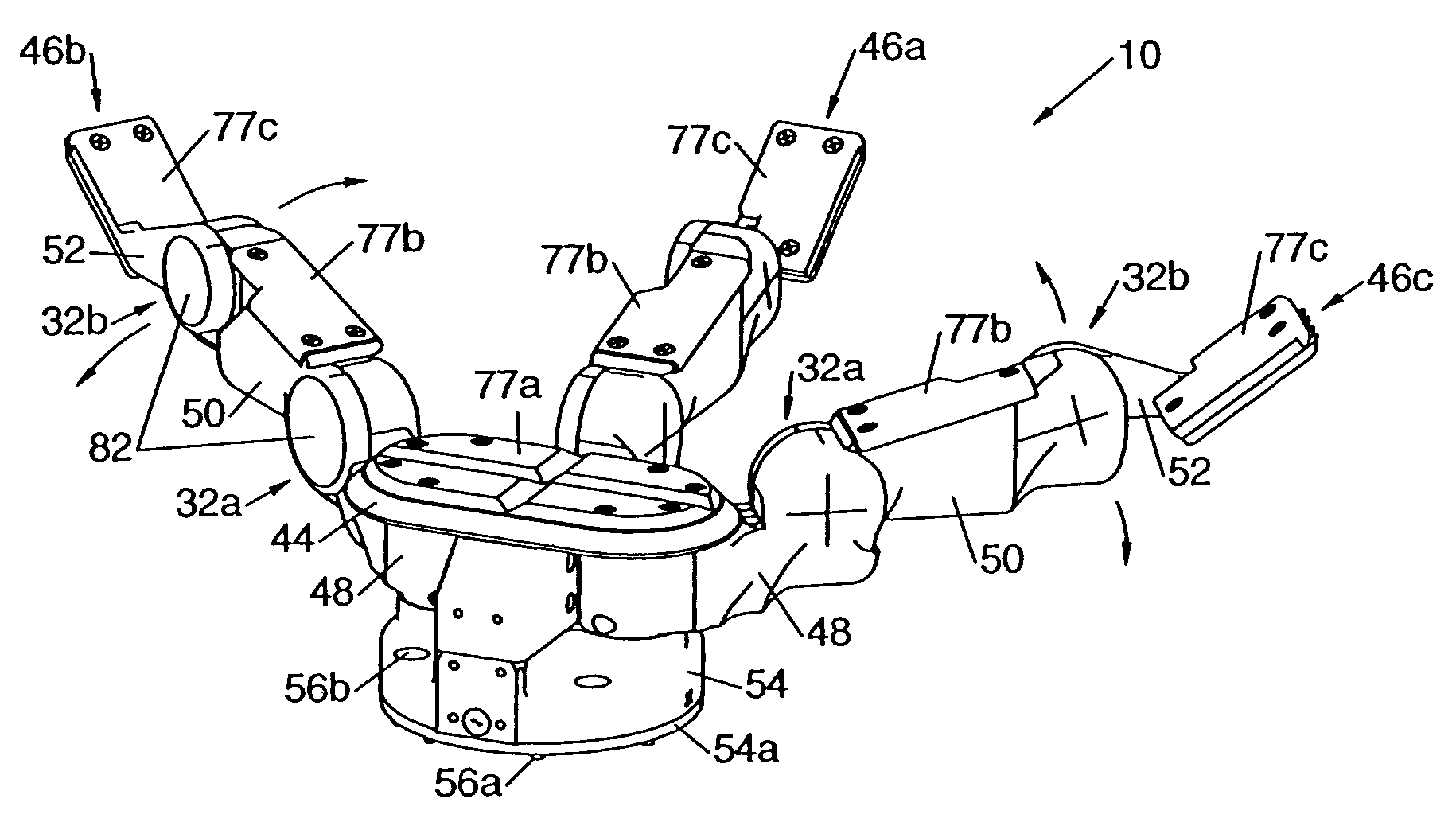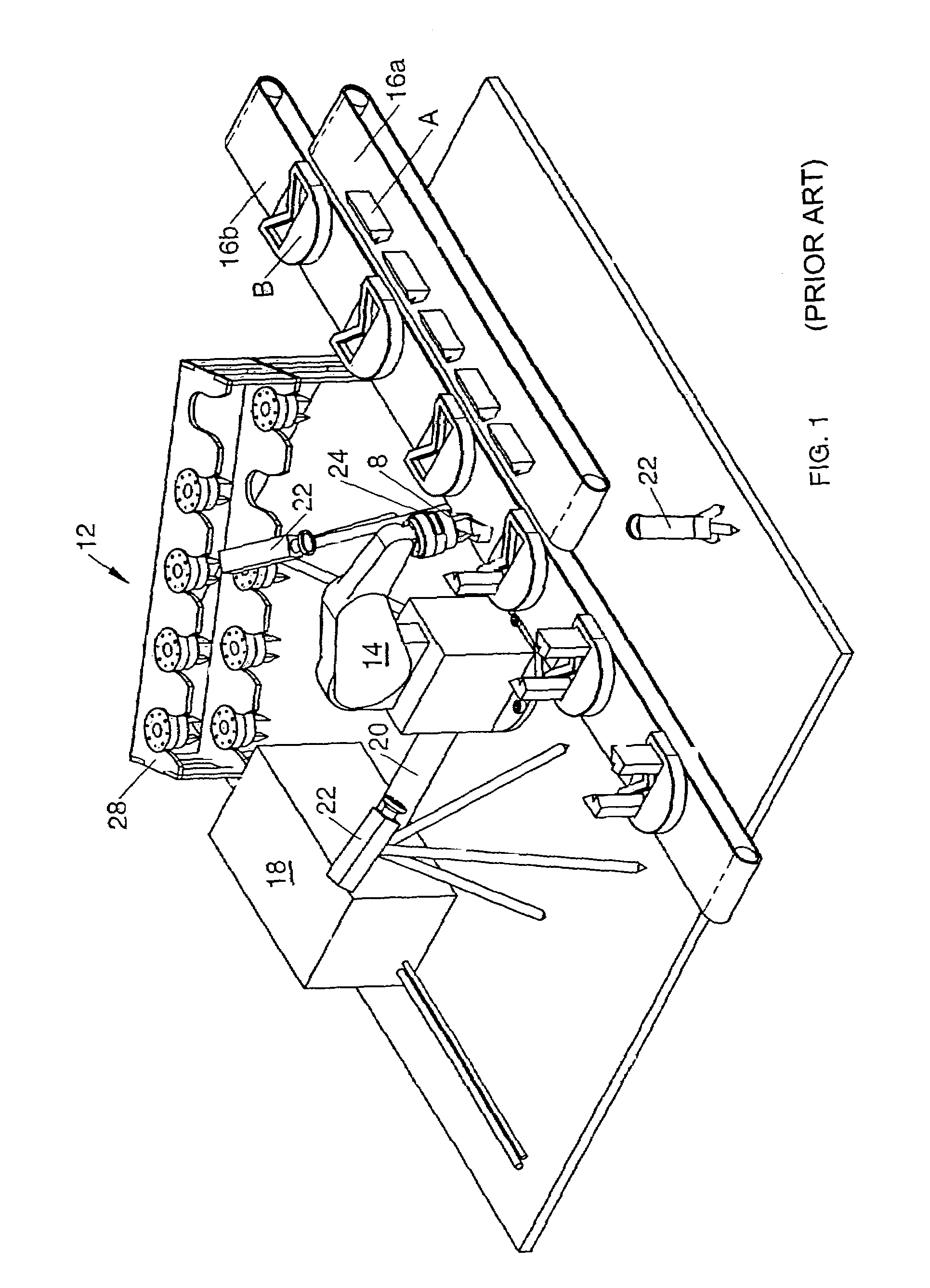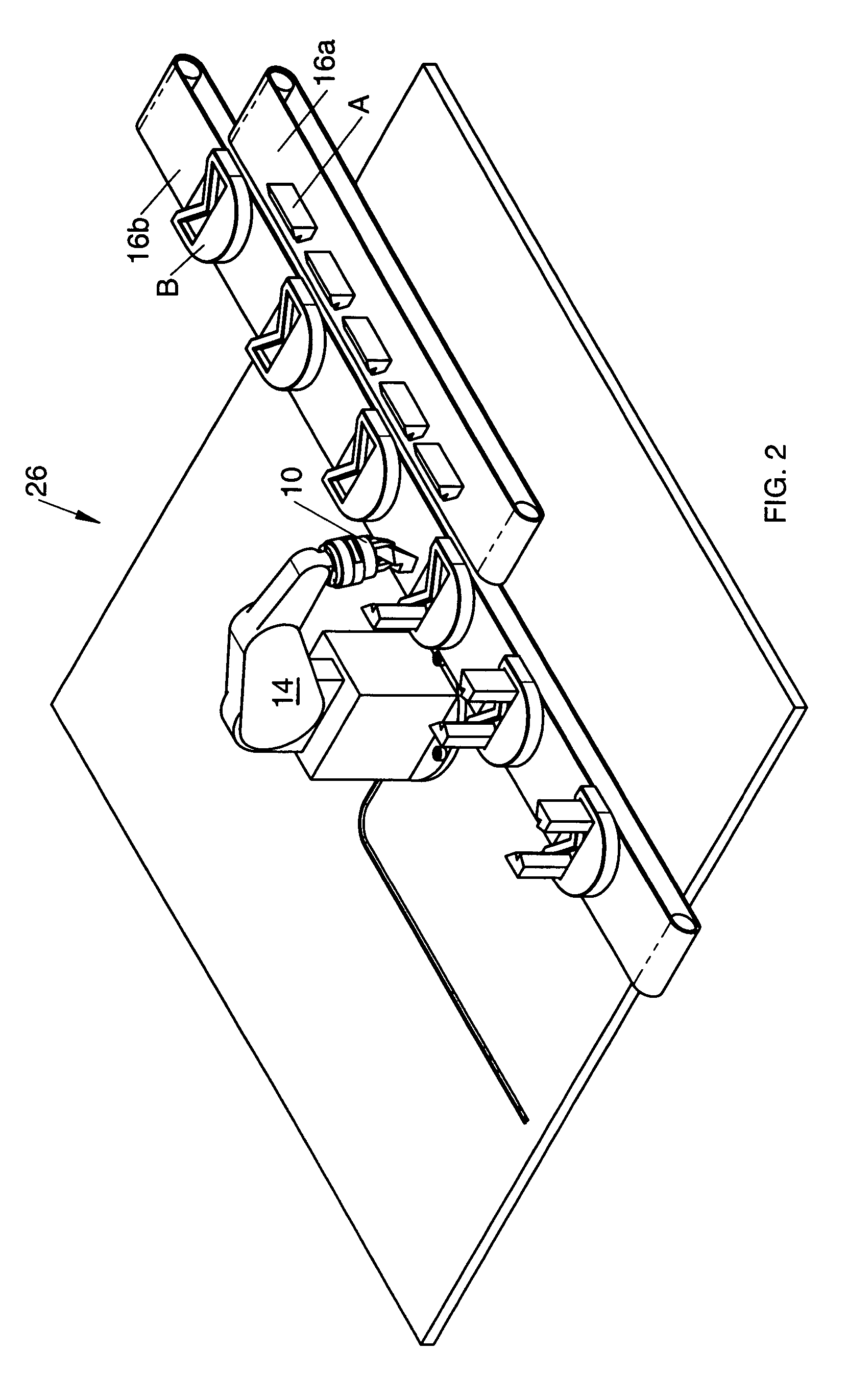Intelligent, self-contained robotic hand
a robotic hand and self-contained technology, applied in the field of robotics, can solve the problems of limiting the number of previous robotic hands, and not contributing significantly to the economy and society
- Summary
- Abstract
- Description
- Claims
- Application Information
AI Technical Summary
Benefits of technology
Problems solved by technology
Method used
Image
Examples
Embodiment Construction
[0069]In existing practical robotic systems such as the workcell shown in FIG. 1, the intelligence and dexterity are concentrated around the static workcell area 12 and on the robotic arm 14 or other moving platform that supports a prior art tool 8, but never at the tool itself. While several intelligent and dexterous research-prototype robotic hands have been built in order to emulate human hand motion or to study the mathematics of multi-fingered manipulation, these devices are not designed to make a complete system more useful for completing practical tasks. For example, in order to design such a hand, either the hand is not compact or the sizable electronics are located outside the hand. As a result, applicants are not aware of any being used in a commercial application.
[0070]The tool 8, which comes in direct contact with the task, here the assembly of parts A transported on conveyor 16A to one of parts B transported on conveyor 16B moving in the opposite direction, is merely a ...
PUM
| Property | Measurement | Unit |
|---|---|---|
| voltages | aaaaa | aaaaa |
| voltages | aaaaa | aaaaa |
| voltages | aaaaa | aaaaa |
Abstract
Description
Claims
Application Information
 Login to View More
Login to View More - R&D
- Intellectual Property
- Life Sciences
- Materials
- Tech Scout
- Unparalleled Data Quality
- Higher Quality Content
- 60% Fewer Hallucinations
Browse by: Latest US Patents, China's latest patents, Technical Efficacy Thesaurus, Application Domain, Technology Topic, Popular Technical Reports.
© 2025 PatSnap. All rights reserved.Legal|Privacy policy|Modern Slavery Act Transparency Statement|Sitemap|About US| Contact US: help@patsnap.com



